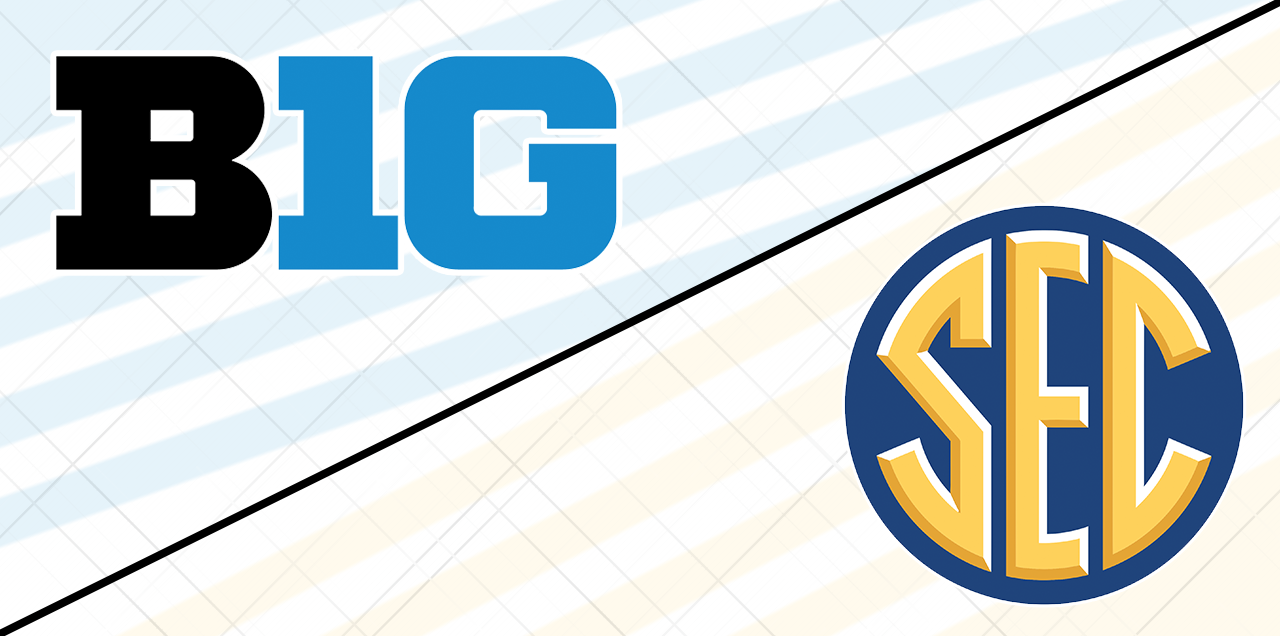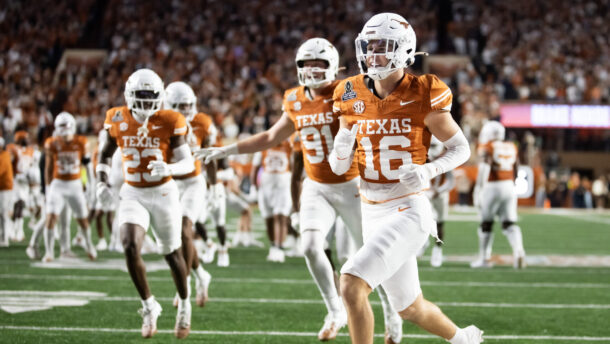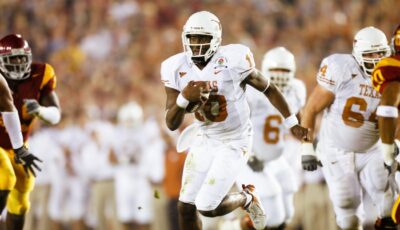
Digging deeper into the B1G vs. SEC head-to-head battle: How big of a gap is there?
Urban Meyer said something at B1G Media Days that made plenty of stops along the aggregation expressway.
Five years after Meyer attended his first B1G Media Days as the new coach of Ohio State, he talked about the gap between the B1G and the SEC. After all, Meyer was the perfect person to speak about that subject as the former Florida coach.
So by now, you probably saw what Meyer said two weeks ago when asked about the gap between the B1G and the SEC.
“I don’t think there’s a gap at all. And that’s no disrespect to other conferences,” Meyer said in Chicago. “To give my opinion to other conferences or when I hear that, I have no idea. But I’ve coached in the SEC East when that was one of the strongest in the country.
“And I think the Big Ten East right now is every bit as strong as I can remember the SEC East.”
Meyer might have a point in that regard. There were three B1G East teams in College Football Playoff contention after the conference title games concluded compared to just one for the entire SEC.
Competition is all relative, though. Those accomplishments weren’t achieved against the same competition.
So was there a gap when the B1G and SEC faced off in 2016? Well, the SEC won two games (both were bowls) and the B1G won one. That’s not a big enough sample size.
What would be a big enough sample size would be if someone went back to the start of 2008 and found every B1G vs. SEC matchup. Lucky for you, I already took care of that.
It revealed some interesting things about that ever-discussed gap.

You can debate the recent success the B1G had in regular season compared to the SEC. The fact that four B1G teams were ranked in the preseason Coaches Poll top 10 compared to one SEC team adds more fuel to the argument.
But in terms of the head-to-head battle, there’s definitely still a gap. At least that’s what the numbers show.
Since the start of the 2008 season, the SEC won 22 of the 35 matchups between the two conferences. If you value point differential, the SEC had a 7.7-point advantage per victory. Look a little closer and it’s more uneven than that number would suggest.
In the SEC’s 22 victories from 2008-16, 11 were decided by 15-plus points. The B1G, on the other hand, only has one victory that was decided by more than 15 points (Michigan’s 41-7 drubbing of Florida in the 2016 Citrus Bowl).
One looks at those numbers and probably thinks, “You better believe there’s still a gap.” There are other numbers that suggest the SEC has the clear upper hand in head-to-head battles since 2008:
- Northwestern (3), Ohio State (2), Wisconsin (2) are only B1G schools with multiple SEC wins
- Tennessee (3), Mizzou (2) and South Carolina (3) have eight combined B1G wins
- Mizzou has more wins of 15-plus points (2) vs. the B1G than the entire B1G has vs. the SEC
- SEC is 18-9 vs. B1G in bowl games
See that last number? It’s important, but maybe not for the reason that you might think it is. Everyone already knows that the SEC has the clear bowl advantage against the B1G. You can’t debate 18-9.
If you math wizards connected some dots already, congrats. You’re an even bigger nerd than I am.
The B1G and SEC faced off in eight regular season games from 2008-17. The series is an even 4-4 split.
Here were those matchups:
- 2010 Northwestern 23, Vanderbilt 21
- 2012, Alabama 41, Michigan 14*
- 2012 Northwestern 23, Vanderbilt 13
- 2013, Mizzou 45, Indiana 28
- 2014, LSU 28, Wisconsin 24*
- 2014, Indiana 31, Mizzou 27
- 2015, Alabama 35, Wisconsin 17*
- 2016, Wisconsin 16, LSU 14*
*neutral site game
Yes, they were all either neutral site games, or they were Indiana-Mizzou/Northwestern-Vanderbilt. In other words, Mizzou and Vanderbilt were the only two SEC teams that played in a B1G stadium since the start of 2008. Last year, LSU joined them as the only teams to play against a B1G team north of the Mason-Dixon Line in that stretch.
Of those 38 B1G vs. SEC matchups since the start of 2008, 35 of them were played in either an SEC stadium or at a neutral site venue south of the Mason-Dixon Line.
That’s a pretty big gap, too.

Does that mean the only reason Alabama whipped Michigan State in the Cotton Bowl in 2015 was because the game was played in Dallas instead of Detroit? Of course not, but it would be interesting if B1G and SEC teams actually had home-and-home series in the regular season.
And I’m not just talking about Northwestern-Vanderbilt or Purdue-Mizzou. While not everyone is on board with this revolutionary idea yet, some are. Penn State and Auburn have a home-and-home lined up for 2021 and 2022. In 2026 and 2027, we’ll see Nebraska and Tennessee face off in a home-and-home.
You know, if we’re all still alive for that.
It’ll take years of success against the SEC for the B1G to truly gain the head-to-head advantage. A lot of that stems from recruiting. Meyer pointed how that was the biggest thing that needed to change for the B1G to truly be like SEC.
RELATED: Why your precious Power 5 conference won’t make the Playoff
Since he took over, it has. In 2012, the B1G had two teams in the top 30 of the 247sports class rankings. In 2017, the B1G upped that number to five. In 2017, nine of B1G’s 14 teams are ranked in the top 35. That’s the same as the SEC (yes, it’s early).
Meyer’s comment made the rounds because it’s not the universal opinion. He knows that one year doesn’t change narratives in college football.
Who knows what the narrative will be 10 years from now? Meyer could be on a golf course instead of talking about the B1G-SEC gap. Maybe Nick Saban, at age 75, will be asked about a gap between the SEC and the B1G.
Have mercy on whichever reporter takes that plunge.
Connor O'Gara is the senior national columnist for Saturday Down South. He's a member of the Football Writers Association of America. After spending his entire life living in B1G country, he moved to the South in 2015.







